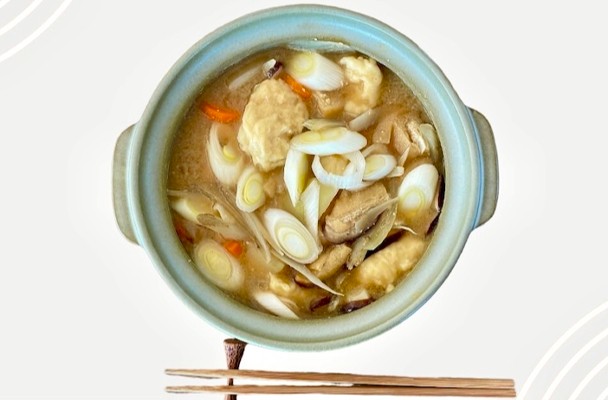This time's Japanese Local Cuisine Reproduction series is themed on "suiton" (すいとん or 水団), a local dish of Tochigi prefecture. You might have seen similar dish in your country as a soup with dango, but what makes this local dish unique is that it uses Japanese seasonings 'miso' and 'dashi'. Learn about the history of suiton in this article, and maybe try using the recipe in this article to make a dumpling soup that has been eaten in Japanese households for a long time?
What is a Japanese local cuisine?
Local cuisine (郷土料理 / Kyodo-ryouri) refers to dishes suitable for the climate that have been eaten in a local area for many years by using regional products. Many of them are comfort food and are popular among Japanese for domestic gourmet trips.
Origin and history of Suiton
The name of suiton comes from the Chinese character '飩' and '団' which is pronounced "ton". Originally called 'unton' (饂飩), the dish was made by kneading bean paste into wheat flour and deep-frying it. However, it then changed to the one that only kneaded wheat flour was used after years. It is said that it was in the Muromachi period that kneaded flour was stretched into a string and eaten (饂飩 read as udon), and it was until Kamakura period that people began to tear it and put it in soup. Eventuallly, it came to be called suiton (水団 or 水飩) because it is a dumpling (団 / ton) that is put in soup (水 / sui).
In the past, in areas with few paddy fields, suiton was a home-cooked dish served on a daily basis as a food to compensate for the shortage of rice. There were 'suiton' unique to each region all over the country, and were called by various names.
In the former Nishinasuno district of Nasushiobara City in Tochigi Prefecture, suiton is called 'Batto-jiru', while in the former Bato district of Nakagawa Town it is called 'Hatto-jiru' that is said to be derived from the local accent of '法度汁'. The places which call it 'Dangojiru' (だんご汁) include the former Kamikawachi district of Utsunomiya City, the former Kuriyama district of Nikko City, the former Nishinasuno district of Nasushiobara City, etc. Moreover, in the Kuzu district of Sano City, it is also called 'tocchanagi' (とっちゃなぎ) because the dough is kneaded by pounding it repeatedly.
Since it has a lot of ingredients and does not require a side dish, suiton was used to be made when people were busy or when there was not enough rice. It is still popular as a home-cooked dish even today. Especially in winter, it can be seen in many households because it helps warm up the body. Depending on the season, rice flour may be used instead of wheat flour, and seasonal vegetables might be featured as well.
Ingredients for suiton (for 2 servings)
- 120g chopped potatoes
- 70g quarter-rounds carrot
- 100g onion, thinly sliced lengthwise
- 50g burdock root cut into small piece, scum removed by soaking in water
- 2-3 shiitake mushrooms, stalks removed and thinly sliced
- 50g green onion, cut diagonally
- 50g miso
- 1 pack of fried tofu
- 6-7 cups of dashi stock
【Dumplings/Suiton】
- 200g wheat flour
- 1 egg
- 150ml water
- 1/2 teaspoon salt
*You can add thinly sliced pork belly or chicken according to your preference.
How to make suiton
- Put the dashi stock in a large po. When it boils, add the vegetables, excluding the green onions, and cook until they are about 80% soft.
- Make suiton dumplings. Crack the eggs into a bowl, add water and salt and mix to make an egg mixture. Sift the flour into another bowl. Stir with a spatula while adding the egg mixture to make a soft dumpling dough.
- Dissolve the miso into the pot from step ①. While the pot is still being heated, take a bite-sized portion of the suiton dumpling dough with a spoon and add it to the soup. When the dumplings float, add green onions and serve them in a bowl.


Comments